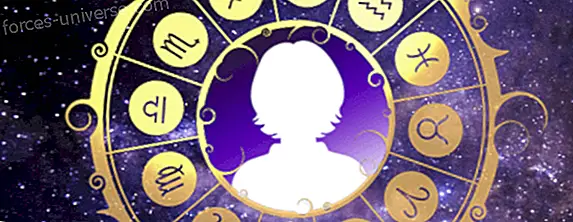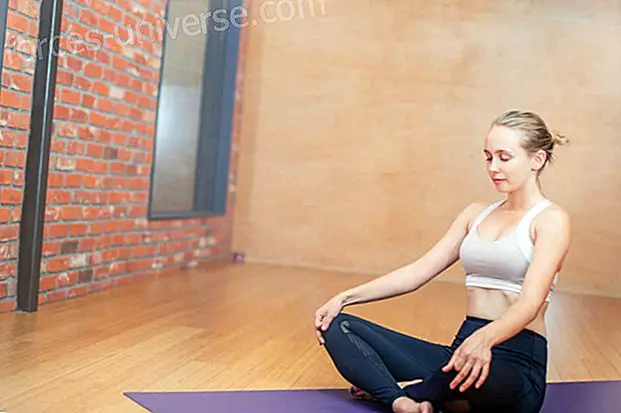Sayadaw U Kundalabhivamsa: Note from this great teacher on Mindfulness Meditation (Part 2)
- 2018

We continue in this article the translation of the note that began here. This part is one of the most interesting, because the teacher Sayadaw U Kundalabhivamsa tells us about the importance of understanding that everything is impermanent, that nothing is eternal, and that we must learn to know it when it is presented to us. The pain, discomfort and numbness that we feel in our practice of Full Consciousness Meditation is another opportunity to put our attention on our body and truly get to know it.
In this part we will conclude the section of the note of the great teacher who talks about the practice of Full Consciousness Meditation in a sitting position .
Mindfulness Meditation
While you are concentrating on ELEVATION, DESCENT, SITTING, CONTACT for about half an hour or forty-five minutes, you will notice that your limbs will begin to bother you, hurt you or numb you. When this occurs, you should try to take note of that suffering by bringing your concentration and your full consciousness of ELEVATION, DESCENT, SITTING, CONTACT to the sensation of pain, concentrating your mind on pain .
There are three paths of Mindfulness Meditation in regards to PAIN. The first is to focus on the pain to make it go away. The second is to make this pain go away in an aggressive way. The third is to contemplate and accept the truth of the pain you are suffering .
The first way is when your mind focuses on pain, ending with the intention of being relieved of pain and getting pleasure. This is done by ambition, that is, be ambitious of your pleasure. Full Consciousness Meditation is not done for pleasure, but to stop the ambition within you, and if you cannot eliminate that greed ( Lobha ), you will not be ready to know its true nature . Then, you should not contemplate this way.
The second way where you determine to get rid of this suffering is not good either, because there is anger in the determination. In other words, the determination is contaminated with anger, and the Mindfulness Meditation does not allow anger to interfere within us.
Being aware of pain
So the third way is how you should concentrate your mind on the pain itself - how it manifests and what its qualities are .
When the pain happens, the yogis would like to compose themselves. You must let your body and your mind relax . You should not be anxious and ask yourself, ' Should I stay that way for an entire hour? 'o' Should I be suffering like this all the time? '
The pain or suffering will come at your will and your duty is to put your full consciousness in that pain . You must remain calm in mind and be patient. You must have patience, which is the main issue, since it is only with patience that you can reach NIBBANA . Patience is the most useful question in Mindfulness Meditation, so you must remain calm in both the mind and body and relax both. Do not be too tense. Keep your mind in pain and think where you can feel it, and feel how painful it is - where is this most crucial pain - in the muscles? on the skin? Or below to the veins, bones and marrow?
You must concentrate very deeply in the particular place of your body where the pain occurs and repeat yourself 'PAIN, PAIN; Annoying, annoying 'and getting to know exactly where it happens and how painful it is. Superficial Full Consciousness Meditation is not allowed.

ANICCA DUKKHA ANATTA
If you are aware of that pain, discomfort and numbness, you will notice that those aches and pains will become more severe and unforgiving . Just as that pain becomes relentless, it will also be reduced and calmed naturally . But your concentration should not be reduced. You must seriously and enthusiastically continue with your full consciousness and repeating yourself PAIN, PAIN; ANNOYING, ANNOYING, until they have disappeared one by one or until the areas of pain change places.
When you become very energetic and enthusiastic in Mindfulness Meditation, the VISION will arise. As your concentration becomes stronger and more advanced, the aches and pains will disappear as soon as they appear. You will notice that the pain does not last for a long time - neither will your FULL CONSCIENCE MEDITATION, nor the knowledge of pain. Birth and death are very fast and painful, and the protection of such transcendence and pain is not possible .
As far as we know that
The pain is ANICCA - IMPERMANENT
The pain is DUKKHA - SUFFERING
The pain is ANATTA - UNCONTROLLABLE
Being aware of the sounds
While you are meditating you will listen to sounds, see things and you will get aromas of things that are around you . You will especially hear sounds of clocks, birds, blows and sounds of cars and people. When you hear those sounds make a mental note and repeat ' LISTENING, LISTENING ' but your mind should not pursue these sounds .
If your power of concentration is strong, these sounds that you are listening will become indistinct and will be carried too far or they may become stronger and closer or hoarse and unclear. In time you will come to see that as you repeat ' LISTENING, LISTENING ', the sounds will slowly disappear - as will the knowledge or attention in listening and your CONSCIENCE MEDITATION FULL of listening.
The sounds you heard at the beginning will disappear one by one or the syllables of a word you hear will not be connected with the others to make sense. For example, the word ' gentleman ' can become disconnected syllables like ' ca… ba… lle .. '. The moment the sound disappears, so will the full awareness of listening and the FULL CONSCIENCE MEDITATION will also disappear naturally. That is ANICCA - the contingency . Everything is impermanent.
The event of the sounds and their disappearance occurs so quickly and obviously that it is DUKKHA - suffering . So, as nothing can be done to avoid the event and disappearance of sounds, this is ANATTA - uncontrollable .

The four SATTIPATHANA
From time to time you will come to understand that sounds are not eternal ; The knowledge of Full Consciousness Meditation is also impermanent and that you cannot do anything to stop these things from happening and disappearing. This is the understanding that you will experience with the SOUND CONSCIOUSNESS MEDITATION .
Full Consciousness Meditation during the POSITION OF SITTING ' ELEVATION, DESCENT, SITTING, CONTACT ' has to do with the body, which is why it is known as KAYANUPASSANA SATIPATTHANA . Feeling the pain, discomfort and numbness is related to what hurts, so it is known as VEDANANUPASSANA SATIPATTHANA . ' DIVAGING, DIVAGING, PLANNING, PLANNING, THOUGHT, THOUGHT ' has to do with the mind, which is why it is known as CITTANUPASSANA SATIPATTHANA . ' SEEING, SEEING, LISTENING, LISTENING, ODORING, ODORING ' has to do with the law of DHAMMA, which is why it is known as DHAMMANUPASSANA SATIPATTHANA .
Therefore we see that these four SATIPATTHANA are included when a yogi practices FULL CONSCIENCE MEDITATION during the SITTING POSITION.
In this way, Reverend Sayadaw U Kundalabhivamsa conveys his wisdom about the sitting position in a simple and practical way. In the continuation of this note, the one you can find here, I will continue with the translation of the section in which you speak of the Full Consciousness Meditation in Motion .
I wait for you there.
AUTHOR: Lucas, editor of the great family of HermandadBlanca.org
SOURCE:
- http://www.myanmarnet.net/nibbana/sadhama1.htm
- http://www.vipassanadhura.com/howto.htm#y
- http://www.myanmarnet.net/nibbana/biograp1.htm#saddhamaransi
PART 1: sayadaw-u-kundalabhivamsa-grand-teacher-about-meditation-mindfulness-part-1 /
PART 2: sayadaw-u-kundalabhivamsa-grand-master-about-meditation-mindfulness-part-2 /
PART 3: sayadaw-u-kundalabhivamsa-grand-master-about-meditation-mindfulness-part-3 /
PART 4: sayadaw-u-kundalabhivamsa-grand-master-about-meditation-mindfulness-part-4 /






